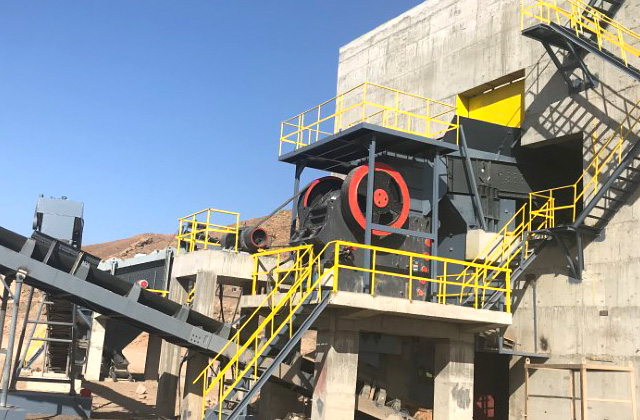A stationary crushing plant for hard rock is a vital piece of equipment in industries like mining, quarrying, construction, and recycling. It is designed to crush large rocks and stones into smaller pieces of specific sizes for various applications. These plants are stationary, meaning they are set up in a fixed location and are not designed to be moved frequently. Here’s a comprehensive overview of a typical stationary crushing plant for hard rock:

1. Primary Crusher: The primary crusher is the initial stage in the crushing process. It typically consists of a heavy-duty jaw crusher capable of handling large rocks up to several feet in size. The primary crusher reduces the rock size to a manageable level for further processing.
2. Secondary Crusher(s): After the primary crushing stage, the crushed material may undergo further reduction in secondary crushers. These crushers can be cone crushers or impact crushers, depending on the specific requirements of the application. Secondary crushers further reduce the size of the rock to the desired specifications.
3. Screening Equipment: Screening equipment is used to separate the crushed material into different sizes based on their particle size distribution. This is typically done using vibrating screens with various screen sizes to achieve the desired gradation of the final product.
4. Conveyor Systems: Conveyor systems are used to transport the crushed material between different stages of the crushing process. They ensure a continuous flow of material and efficient operation of the plant. Conveyors are essential for moving material from the primary crusher to the secondary crushers and from the crushers to the screening equipment.
5. Control System: A control system is installed to monitor and regulate the operation of the crushing plant. This system includes sensors, PLCs (Programmable Logic Controllers), and HMI (Human-Machine Interface) panels that allow operators to control various aspects of the crushing process, such as feed rate, crusher settings, and conveyor speeds.
6. Dust Suppression System: Crushing hard rocks can generate a significant amount of dust, which can pose health hazards and environmental issues. A dust suppression system is installed to minimize dust emissions from the crushing plant. This system typically includes spray nozzles, water tanks, and pumps to suppress dust at various points throughout the crushing process.
7. Maintenance and Service Facilities: A stationary crushing plant requires regular maintenance to ensure optimal performance and longevity of the equipment. Service facilities such as maintenance platforms, access stairs, and service cranes are installed to facilitate maintenance tasks such as changing wear parts, lubrication, and inspection.
8. Safety Features: Safety is paramount in any industrial operation, and stationary crushing plants are no exception. Safety features such as emergency stops, safety guards, and warning signs are installed to protect operators and maintenance personnel from accidents and injuries.
In conclusion, a stationary crushing plant for hard rock is a complex system comprising various components designed to efficiently crush and process large rocks into smaller, usable aggregates. From primary crushing to screening and conveying, each component plays a vital role in ensuring the plant operates smoothly and produces high-quality materials for various industrial applications.
